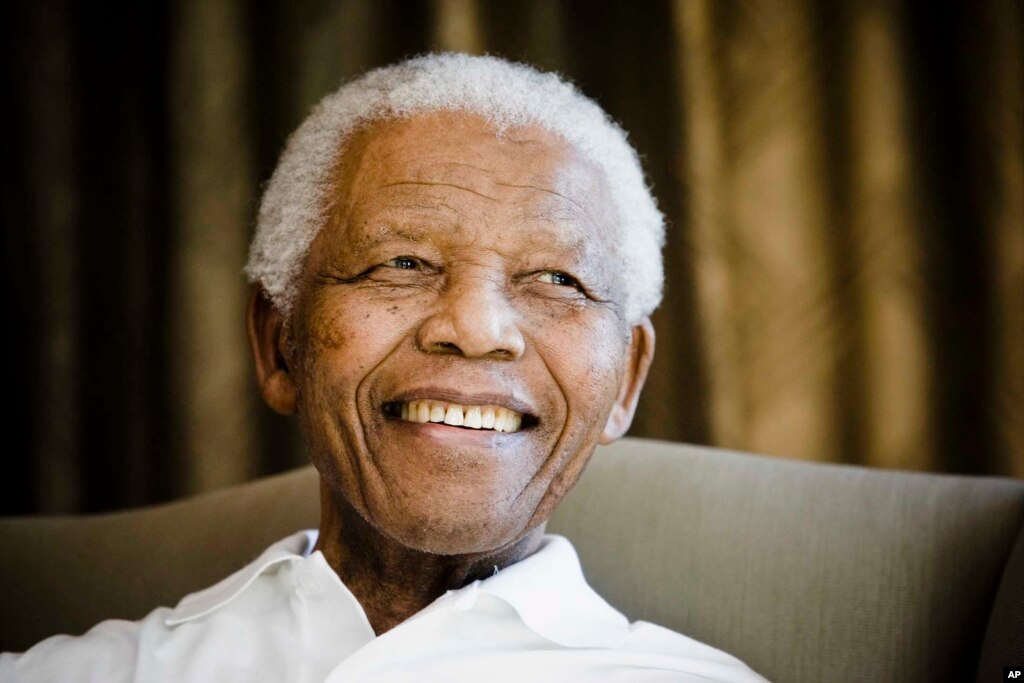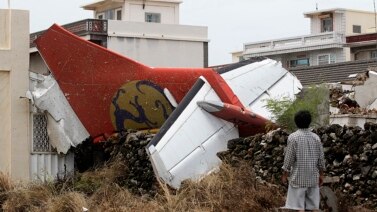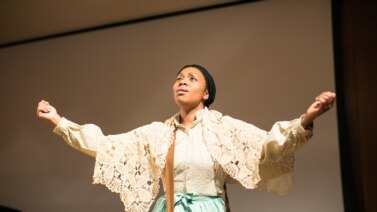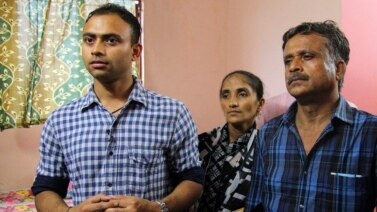
From VOA Learning English, welcome to As It Is. I’m Steve Ember.
Today on our program we travel to Africa.
Our first stop is South Africa. We have a report on a new center set up to honor former president Nelson Mandela.
Then we turn to Zimbabwe to examine that nation’s health-care system.
[From a “Peanuts” television program]
Lucy: “Do you think I’m beautiful, Charlie Brown? You didn’t answer right away. You had to think about it, didn’t you? If you really thought I was beautiful, you would have spoken right up. I know when I’ve been insulted.”
Charlie: “Good Grief!”
And finally – Oh good grief, Charlie Brown! – we remember the creator of the popular “Peanuts” comic strip, Charles Schulz. He was born on this date.
But first, we hear about a new center – and a movie – about South Africa’s Nelson Mandela.

Officials in that country have opened the Nelson Mandela Centre of Memory in Johannesburg. The opening took place just a few days before the first South African showing of a Hollywood movie based on Mr. Mandela’s life.
The former president is 95 years old and suffering from health problems. But officials say he has much to teach the nation, and the world.
The Nelson Mandela Foundation invited many well-known South Africans to the new exhibit of Mr. Mandela’s life. President Jacob Zuma, for example, praised the man whose struggles ended white, minority rule in the country. Mr. Mandela was the country’s first black president in 1994.
The airy, modern new space presents many artifacts, from official documents to personal belongings. Pictures show Mr. Mandela at different periods in his life – from a schoolboy to a young lawyer, from a longtime prisoner to president.
Visitors may also learn a few new personal details of a man about whom so much has been written.
Nelson Mandela spent 27 years in prison. Visitors will see a copy of his extremely well organized office and read letters in his handwriting. They can look at his Nobel Peace Prize. Mr. Mandela won the prize in 1993 for his part in ending South Africa’s official system of racial separation.
But perhaps the most interesting objects are kept underground at the center. Thousands of documents written by and about Mr. Mandela and his leadership are kept there. Researchers are working continually to save these papers and include them in the historical records.
At the opening ceremony for the center, Mr. Mandela’s grandson Mandla praised the effort. He said seeing his grandfather’s work meant a lot to him and the family.
“For me, in person, my grandfather has always been the magnet, the unifying factor of around us as a family. And it is one thing for me that today, we see people from all walks of life unifying, coming together in his honor, in the realization of his legacy.”
President Zuma praised the man whom he looked up to when he, Mr. Zuma, was entering politics. Several pictures of Mr. Mandela also show a young Mr. Zuma.
President Zuma said Nelson Mandela taught his nation a valuable lesson. Like many South Africans, the president called Mr. Mandela “Madiba.”
“It was Tata Madiba who led us in the important program of reconciliation and reaching out to one another. It is from him and his generation that we were reminded once more that what unites us far outweigh that which divides us; that humanity is one and that our destiny is linked.”
Sello Hatang directs the Centre of Memory. He says he hopes the center and the movie will show Mr. Mandela as a man of complexity. He hopes that the movie will, in his words, “at least open other windows into the life and times of Nelson Mandela.”
As It Is is coming to you from VOA Learning English. I’m Steve Ember.
Concern grows over health care in Zimbabwe…
And now to the nearby country of Zimbabwe for a look at its health care system. The Health Transitional Fund has greatly improved the health care system in Zimbabwe since 2009. The fund depends on donations from Western countries, including those of the European Union. Recently, EU officials warned that donors might cut back on financing if Zimbabwe does not provide more money to its health care system. Bob Doughty has more on the story.
Health care in Zimbabwe was deeply affected at the height of the country’s economic collapse. As recently as four years ago, some babies were born without medical attention.
Yet today, the health care system is still facing problems. They include use of old equipment, lack of needed drugs, high cost services and not enough health care workers, especially experts.
But a top government doctor notes many changes since Western countries established the Health Transitional Fund, the HTF, to improve the public health system. Dr. Kudzai Masinire says that since the HTF was created, most health centers are now offering many life-saving drugs that formerly were not available. He says the HTF has also been able to keep health professionals working across the country.
Earlier, a number of doctors and nurses objected to poor working conditions. They left Zimbabwe for countries like Great Britain and New Zealand in hopes of finding better jobs.
Since 2009, Western countries have provided more than 500 million dollars. But now, the question is, will the West keep paying for Zimbabwe’s health system? The current budget of 380 million dollars is not enough to keep the health care industry operating on its own. Concern about health care is growing. I’m Bob Doughty.
[Vince Guaraldi Trio plays “Linus and Lucy” theme from “Peanuts”]
It’s As It Is from VOA Learning English. I’m Steve Ember.

And now, we remember American cartoonist Charles Schulz. He was born on November 26th, 1922. He died in 2000.
Charles Schulz created the much loved comic strip “Peanuts,” which first appeared in newspapers in 1950. His gentle comic strip told the story of a boy named Charlie Brown, his sister Sally, their dog Snoopy, and friends Linus and Lucy.
[From a “Peanuts” television special]
Lucy: “Aren’t the clouds beautiful? They look like big balls of cotton. I can just lie here all day and watch them drift by...”
Schulz won many honors for his work, including the Reuben Award in 1955 and again in 1964. The awards came from the National Cartoonists Society. He also was named International Cartoonist of the Year in 1978
Lucy: “What do you see in the clouds, Charlie Brown?”
Charlie: “Well... I was going to say I saw a duckie and a horsie, but I changed my mind.”
As It Is is a production of VOA Learning English. I’m Steve Ember. Thanks for joining us. See you next time.





